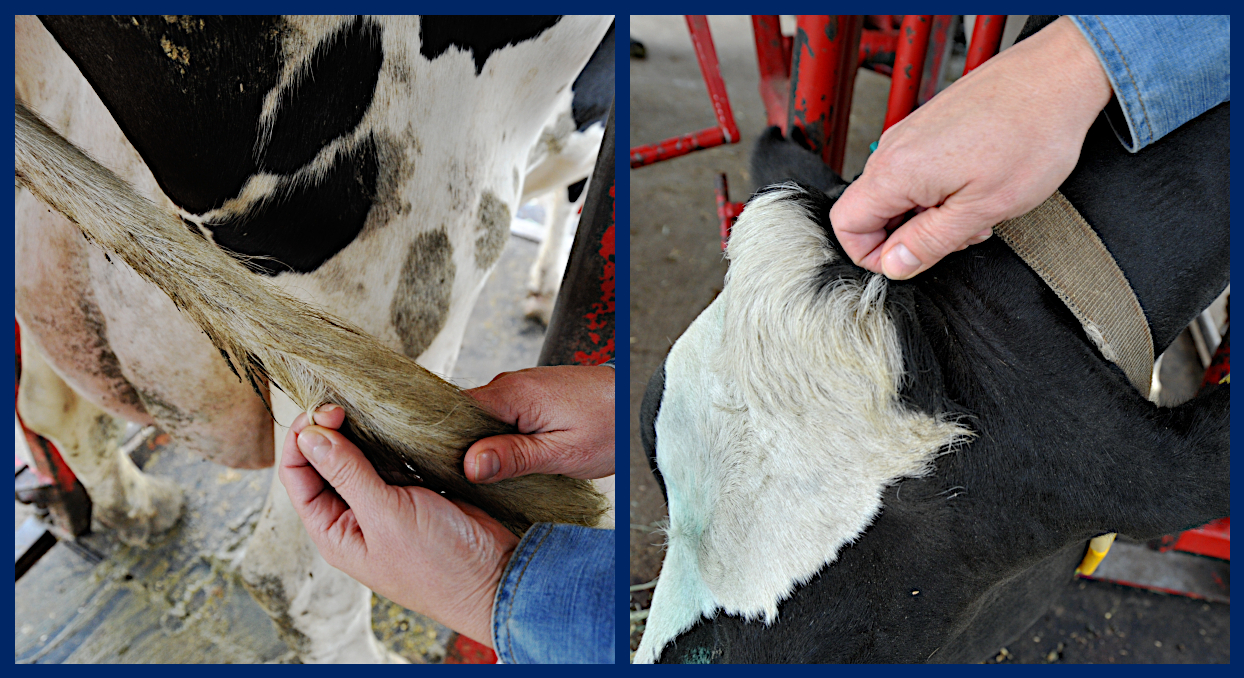Quick Summary
Click here for Price and Turnaround Time
A DNA profile of cattle-specific microsatellite markers is obtained from the offspring, potential dam, and potential sire(s), and parentage analysis is performed using this data. In this process, a computer program compares the DNA profile of the offspring to the profiles of the presumed parents. Candidate sires and dams may either qualify or be excluded as parents based on whether they share microsatellite marker alleles with the offspring. A parentage analyst then reviews the results and sends the final report. If a listed parent or parents are excluded, additional analysis is performed, including retesting of samples and the possible use of additional DNA markers to confirm the exclusion.
You can read more about the process of DNA parentage analysis HERE.
Sample Collection
Most of the cattle DNA tests offered by the VGL are carried out using cells from the roots of a hair sample (roughly 20-30 hairs).
Hair samples should be taken from the switch of the tail, the poll, or the neck.

1. Clean (use comb if possible) tail switch, poll, or neck by removing all loose hair and foreign matter.
2. Use fingers or pliers to grasp approximately 8-10 hairs close to the skin and pull. Pull (do NOT cut) hair strands. Examine the end of hair strands for presence of root bulbs. Hair roots are necessary for DNA testing. If the majority of hair strands lack the root bulbs, discard hair and start again.
3. Repeat until you have approximately 20-30 hairs with root follicles attached.
4. Place the 20-30 hairs with root follicles attached in the envelope and seal with the animal’s ID written on the envelope. If hairs are long they can be taped to the submission form. Do not tape the roots.

5. Repeat steps 1-4 for each additional animal being sampled.
Note:
- Hair should be dry.
- If hair has excess dirt and debris, please brush out if possible before pulling hairs for sample.
- Do not cut the hair! The roots contain the DNA for testing.
- When sampling several animals in the same session, make sure that there are no hair strands in your hands to reduce the possibility of sample contamination. Clean hands and/or pliers if possible.
In cattle, the following microsatellite markers are reported:
BM1818
RM006
RM067
SPS115
TGLA53
TGLA122
TGLA126
TGLA227
BM1824
BM2113
BRR
CYP21
ETH003
ETH10
ETH225
INRA23

 Parentage/Genetic Marker Report
Parentage/Genetic Marker Report

